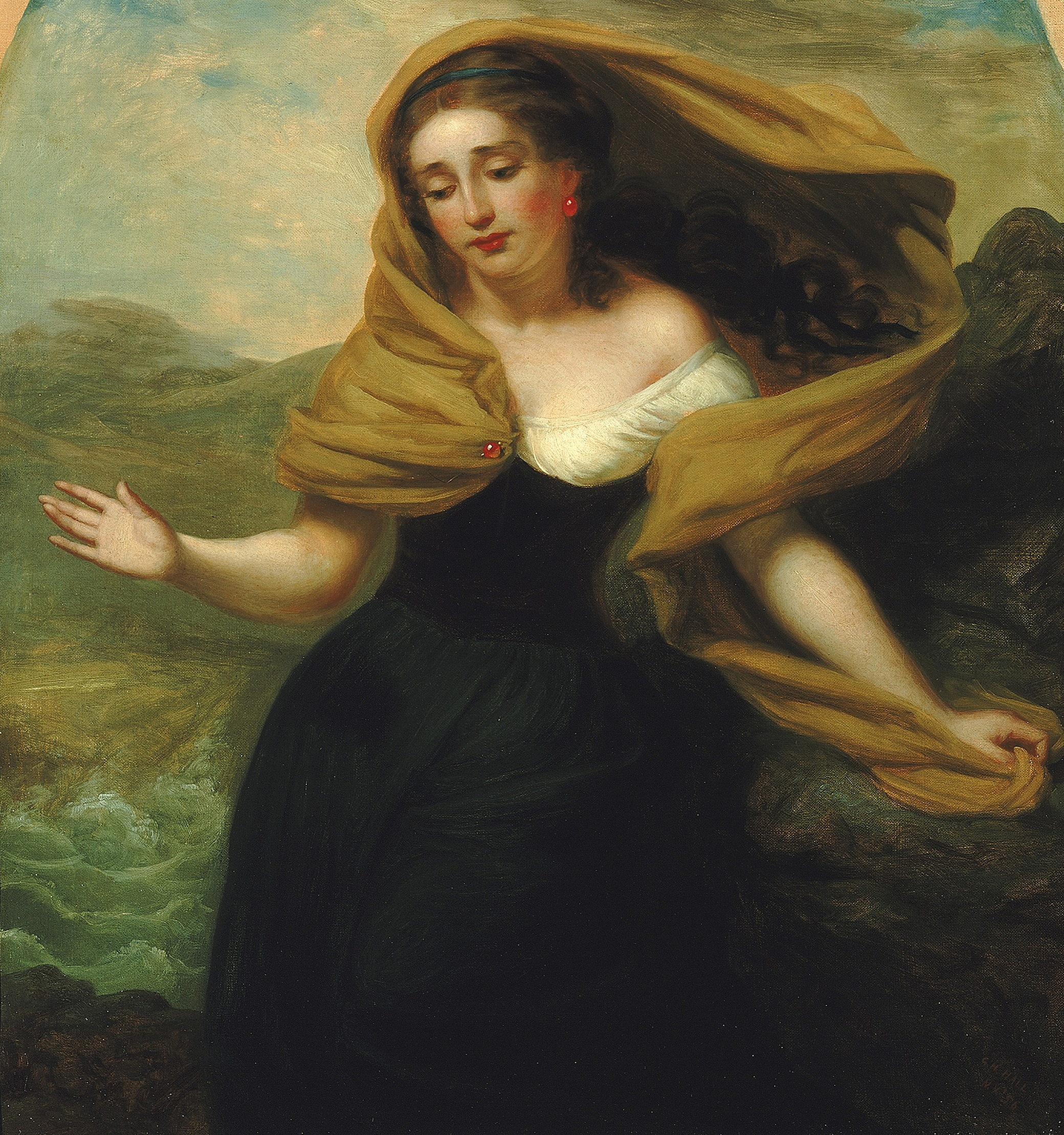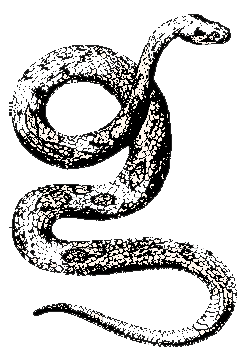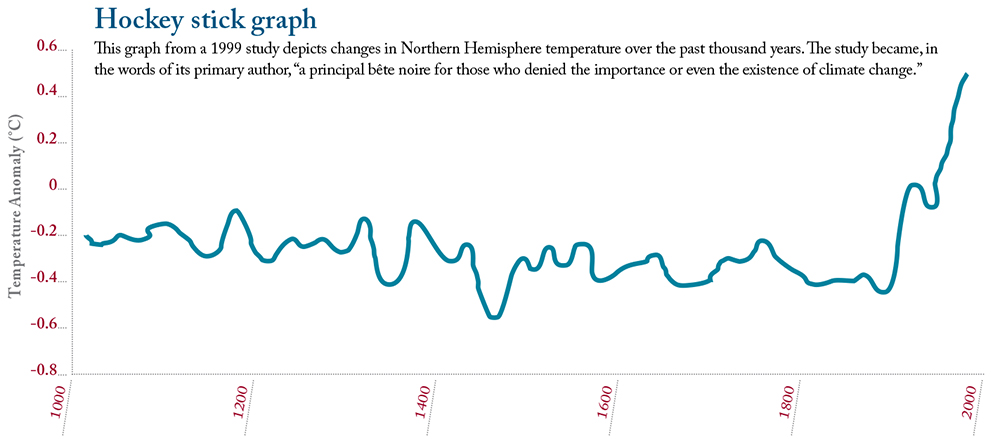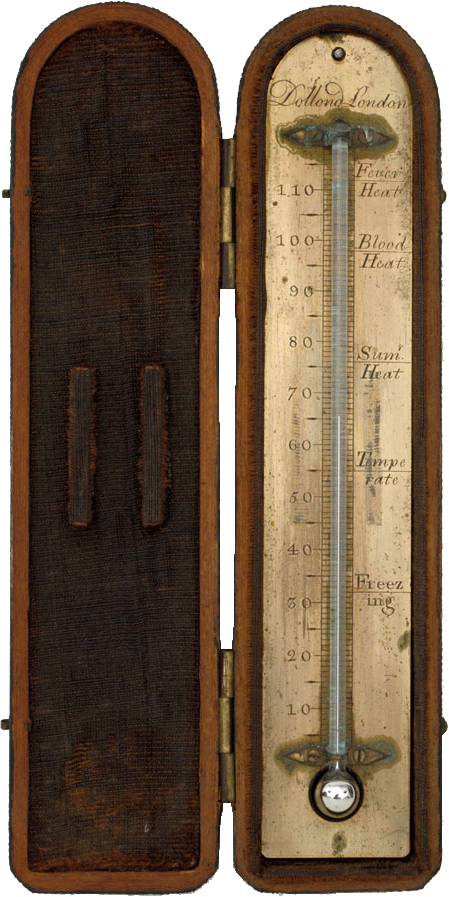
Miranda (from The Tempest), by George Henry Hall, 1856. Smithsonian American Art Museum, Gift of Frederick Darling.
absolute drought: A period of at least fifteen consecutive days in which there is less than 0.01 inches of rain per day. A “partial drought” is a period of at least twenty-nine days in which the mean daily rainfall does not exceed 0.01 inches.
acid rain: Precipitation with acidic components, such as sulfuric or nitric acid, that falls to the ground in wet or dry forms. Normal rain is slightly acidic, with a pH of 5.6, while acid rain has a pH between 4.2 and 4.4. An amendment to the Clean Air Act in 1990 led to an 88 percent reduction in sulfur dioxide between 1990 and 2017.
agnotology: The study of culturally induced ignorance, esp. the publication of inaccurate scientific data.
albedo: A measure of surface reflectivity, calculated by taking the ratio of reflected radiation to incoming radiation: a surface that reflects 100 percent of light has an albedo of 1, while one that absorbs 100 percent of light has an albedo of 0.
Anthropocene: The present geological time interval, in which many conditions and processes on Earth are profoundly altered by humans. Term popularized in 2000 by Paul Crutzen and Eugene Stoermer, who assign the start to James Watt’s refinement of the steam engine in 1784.
assart: The action or process of converting forest or wasteland to arable use by clearing trees, bushes, etc.; an instance of this. Usually regarded as an offense when done without permission.
breaclá: (Irish) A dappled day, i.e., a day of sun and rain.
brumal: Of, belonging to, or characteristic of winter; wintry.
climatard: A person who denies climate change.
climate changer: A verbose person who says nothing, adding to carbon-dioxide levels with no return.
clumst: (English dialect) Palsied, benumbed with cold.

cyclone
An atmospheric disturbance in which the wind has a circular or whirling course. Word introduced by Henry Piddington (1848) after Greek κύκλωμα, the coil of a serpent (hence cyclome occurs as an early variant), from Greek κύκλος, circle.
dreich: (Scots) Cold, dreary, unpleasant weather.
environmentalism: Concern for preserving natural environments, esp. from damage caused by human influence; the politics or policies associated with it. First use: 1966.
Favonius: The west wind. From Latin favēre, to favor (see zephyr).
firn: The snow above a glacier that has been partly consolidated by alternate thawing and freezing. From German firn, firne, lit. “last year’s.”
flinchin: (Scots) Deceitful promise of better weather.
flood: “A superior degree of dampness.”—Ambrose Bierce, Devil’s Dictionary
foehn: A warm, dry wind developing on the lee side of a mountain range in response to air moving across the range.
fossil fuel: A carbon-based energy source (coal, oil, natural gas) derived from fossil deposits that produce carbon dioxide when burned.
Gaia theory: A hypothesis put forth by James Lovelock in the late 1960s that posits Earth is a self-regulating complex system involving a biosphere, atmosphere, hydrosphere, and pedosphere.
gully washer: A heavy downpour, usually of short duration.
hyetal: Of or belonging to rain. From Greek ὑετός, rain.
inundation: An overflow of water; a flood; the submergence of land by water, esp. in coastal settings.
jizzle: (Jamaican) A drizzle or light rain.
jùfēng: 飓风 (Mandarin) A hurricane or tropical cyclone.
khamsin: A hot, oppressive Egyptian wind from the south or southeast that blows in intervals for about fifty days in March, April, and May. From Arabic khamsīn, modern colloquial form of khamsūn, fifty.
libeccio: (Italian) A southwest wind.

life preserver: A life jacket, life buoy, or other device worn to support a person in water. Invented in 1806 by Francis Columbine Daniel.
Little Ice Age: A cold period from c. 1550 to c. 1850 in Europe, North America, and Asia. There were three maxima: c. 1650, 1770, and 1850.
methane: CH4, a colorless, odorless, flammable gas. The second most important man-made greenhouse gas, produced by decaying organic matter or in the guts of ruminants; also occurs in natural gas and coal gas. Sources include human (agriculture, waste dumps, leaks from coal mines) and natural activities (wetlands, termites, wildfires).
monsoon: A seasonal prevailing wind in Asia, blowing from the southwest between May and September and from the northeast between October and April. From Portuguese monção, Arabic mawsim, season.
naulu: (Hawaiian) An intense shower.
niveous: Snowy, resembling snow; white and lustrous. From Latin niveus, snowy, snow-white.
penitent ice: A spike or pillar of compacted snow or ice.
shitstorm: A frenetic or disastrous event; a commotion, a tumult.
simoom: A hot, dry suffocating sand wind that sweeps across African and Asian deserts during spring and summer. From Arabic semūm, samm, to poison.
soft weather: (Irish) Cloudy with a light mist.
squall: A sudden and violent gust, a blast of wind or short sharp storm. Probably of Scandinavian origin, perhaps Norwegian skval, a sudden rush of water.
tempest: “The utmost violence of the wind; the names by which the wind is called according to the gradual increase of its force seems to be: a breeze; a gale; a gust; a storm; a tempest.”—Samuel Johnson, Dict. of the Eng. Lang. (1755)

thermometer
An instrument for measuring temperature using a substance that expands and contracts under different degrees of heat and cold. The earliest form was an air thermometer invented by Galileo Galilei (1597); alcohol thermometers were used c. 1650; the device of a fixed zero (originally the freezing point of water) was introduced by Robert Hooke (1665). The fixing of zero at an arbitrary point below freezing is attributed to Daniel Gabriel Fahrenheit, who made mercurial thermometers (c. 1720); his scale has been in general use in England since c. 1724. The zero of René-Antoine Ferchault de Réaumur (1730) and of the centigrade thermometer of Anders Celsius (1742) is set to the freezing point of water.
troposphere: The atmosphere’s lowest region, marked by convection and a decrease of temperature with increasing height.
typhoon: A violent storm occurring in India. From Portuguese tufão, Urdu (Persian and Arabic) tūfān, a tropical storm of wind and rain; possibly from Greek τῡφῶν, typhon. Also from Chinese tai fung, common dialect forms of ta, big, and fêng, wind (hence German teifun).
Waldsterben: (German) Lit. “forest death.” A dieback of forest; a condition in trees in which peripheral parts are killed by pathogens or conditions such as acid rain (q.v.) or drought.
weather: The atmospheric conditions at any given time or place. Climate may thus be defined as “average weather.”
whirlwind: A body of air moving in a circular or spiral course around a vertical axis that also has a progressive motion over land or water. Probably from Old Norse hvirfilvindr, whence German wirbelwind.
zephyr: The west wind. From Latin Zephyrus, from ancient Greek Ζέφυρος, the god of the west wind (see Favonius).
Explore Climate, the Fall 2019 issue of Lapham’s Quarterly.